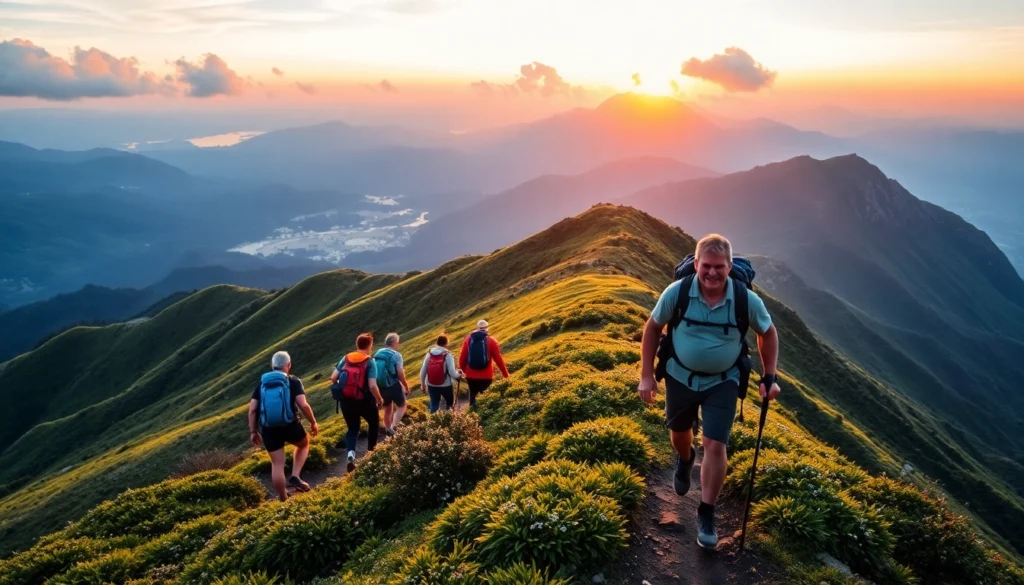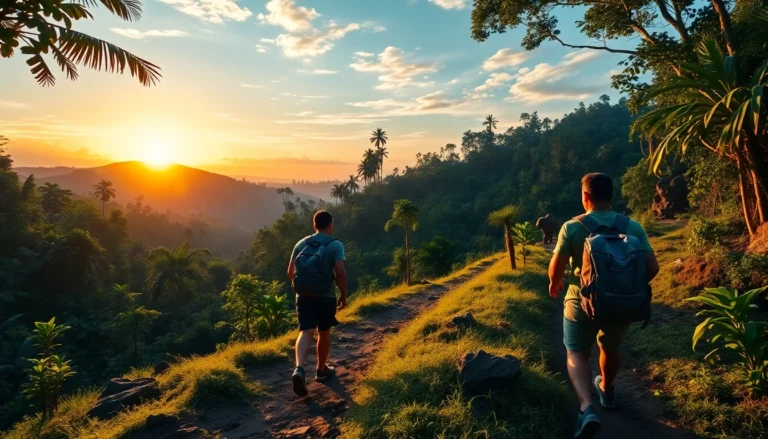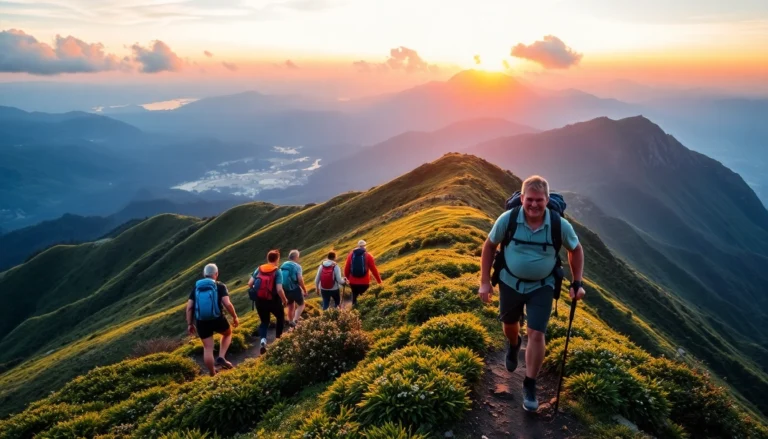
Understanding the Fundamentals of Guided Trekking
Embarking on a trek through natural landscapes offers an unparalleled experience of adventure, discovery, and connection with the environment. Among the various ways to explore these terrains, a guided trek stands out as the most enriching and safe option. Guided treks combine expert navigation, local knowledge, and logistical support to maximize the enjoyment and safety of participants. They are particularly advantageous for those unfamiliar with the terrain, language barriers, or cultural nuances of distant destinations. Understanding what a guided trek entails, how it differs from independent hiking, and why it remains a preferred choice for adventurers worldwide is essential before planning your next expedition.
What is a guided trek and how it differs from independent hiking
A guided trek is an organized journey on foot, led by a professional guide who oversees route planning, safety protocols, and cultural insights. Unlike independent hiking, where individuals are responsible for navigation, logistics, and safety, a guided trek offers a structured experience rooted in expertise and local knowledge. For example, in remote regions such as the Himalayas or Indonesia’s volcanic landscapes, a guide’s familiarity with the terrain ensures exploring hidden paths, avoiding hazards, and making the trek more manageable. Guided treks typically include logistical arrangements such as permits, accommodations, and local transport, providing travelers peace of mind and a more immersive experience.
Contrastingly, independent hiking demands significant preparation, navigation skills, and risk management. While independent trips offer flexibility, they also expose hikers to dangers like getting lost, altitude sickness, or cultural misunderstandings. Guided treks mitigate these risks through expert oversight, making them suitable for novice hikers, families, or those seeking a hassle-free adventure. According to industry insights, guided treks have grown in popularity because they combine safety with authentic engagement with local environments and cultures.
Key components of a successful guided trek
To ensure a successful guided trek, several core components must be meticulously planned and executed:
- Expert Guides: Knowledgeable guides with experience, certifications, and familiarity with the terrain, flora, fauna, and local cultures.
- Customized Itineraries: Well-designed routes tailored to participants’ fitness levels and interests, allowing for cultural immersion, scenic exploration, and manageable pacing.
- Appropriate Equipment and Logistics: Reliable transportation, comfortable accommodations, and well-maintained gear ensure safety and comfort throughout the journey.
- Safety and Emergency Protocols: Clear procedures, communication devices, and access to medical support are critical for handling unforeseen situations.
- Local Cultural Integration: Incorporating visits to local communities, historical sites, and cultural experiences enriches the trek’s value.
In addition, effective coordination with local authorities and adherence to environmental standards promote sustainable and responsible tourism. When these components synergize, trekkers enjoy memorable, safe, and culturally respectful journeys.
Historical and cultural significance of guided treks in popular destinations
Guided treks have played pivotal roles in shaping the cultural understanding and preservation of iconic destinations around the world. In regions like Nepal’s Himalayas, guides have been custodians of local traditions, histories, and ecological knowledge, ensuring these are passed down to trekkers. Similarly, in Europe’s Alps or Indonesia’s volcanic highlands, guided routes help visitors appreciate the cultural heritage, local livelihoods, and spiritual significance of landscapes.
Historically, these treks facilitated trade, pilgrimage, and cultural exchange, making guides essential figures in sustaining regional identities. Today, guided treks continue to foster intercultural dialogue and responsible tourism, emphasizing conservation and community engagement. Notable examples include the Everest Base Camp trek, which intertwines mountaineering history with local Sherpa culture, and Indonesia’s Lombok trekking routes that unveil indigenous traditions intertwined with stunning geographic features.
Engaging in a guided trek not only offers scenic beauty but also educates travelers about the heritage and environmental importance of the locations they visit, fostering a deeper respect and desire to preserve these treasures.
Planning Your Perfect Guided Trek
Selecting the right guided trek for your fitness level and interests
The foundation of an enjoyable trek lies in choosing an itinerary aligned with your physical capacity and personal interests. Treks vary greatly—from leisurely walks through lush forests to challenging alpine ascents—and selecting one that matches your fitness level minimizes risks and maximizes enjoyment.
Begin by assessing your endurance, experience with high-altitude or rugged terrains, and preferred activities. For instance, if cultural immersion appeals more than strenuous challenge, opt for treks that include visits to local villages and cultural sites. Conversely, seasoned hikers seeking adventure might prefer multi-day, high-difficulty routes with significant elevation gains.
Consult reputable providers who offer detailed descriptions, reviews, and assistance in selecting routes suitable for beginners, intermediate, or advanced trekkers. When in doubt, options like guided hikes in Indonesia’s Lombok region or famous trails in New Zealand provide a spectrum of difficulty levels designed to cater to different adventurers.
Essential gear and preparations for a guided trek
A successful trek requires careful gear selection and physical preparations. Essential equipment includes high-quality footwear, layered clothing suitable for variable weather, hydration systems, sun protection, and first aid supplies. For high-altitude or remote treks, additional gear such as altitude sickness medication, trekking poles, and navigation devices are recommended.
Physical conditioning should start weeks before your trek—focusing on cardiovascular fitness, strength training, and flexibility exercises. Acclimatization is vital for high-altitude routes; therefore, build in rest days and consult guides about proper acclimatization strategies.
It is crucial to communicate with your trekking company about gear lists, packing tips, and health considerations. Proper preparation minimizes discomfort and health risks while enhancing the overall experience.
How to choose a reputable trekking company or guide
Choosing a credible trekking company ensures safety, authenticity, and a quality experience. Key factors to consider include industry certifications, safety records, reviews from previous clients, and adherence to sustainable tourism practices. Established operators often employ experienced guides certified in first aid, wilderness survival, and cultural sensitivity.
Request detailed itineraries, inclusions, and policy on emergencies. Confirm logistical arrangements like permits, accommodations, and transportation. It is also beneficial to select companies with local expertise and whom prioritize environmental and social responsibility.
Researching companies through platforms like TripAdvisor, industry associations, or trusted travel forums provides transparency and insights into the quality standards. A well-chosen guide or company transforms a good trek into an extraordinary adventure respecting both nature and local communities.
During the Trek: Best Practices and Safety Tips
Listening to your guide’s instructions and local advice
Your guide is your primary source of safety, information, and cultural insights. Always listen carefully to instructions regarding route navigation, safety protocols, and cultural etiquette. For example, in regions like Lombok, understanding cultural sensitivities—such as appropriate attire or respectful interactions—enhances mutual respect and enriches your experience.
Guides are trained to handle emergency situations, and their advice can prevent accidents or misunderstandings. Respect their expertise and ask questions to deepen your understanding of both the environment and local traditions.
Managing health, hydration, and acclimatization
Maintaining hydration is crucial, especially at higher altitudes, where dehydration can accelerate altitude sickness. Drink regularly and consider electrolyte supplements. Eating balanced meals and pacing your physical effort helps your body acclimate gradually, reducing fatigue and illness risk.
Recognize early symptoms of altitude sickness—such as headaches, nausea, and dizziness—and communicate with your guide immediately if these occur. Proper acclimatization strategies, like gradual ascent and rest days, should be followed diligently.
Respecting nature and local cultures during your trek
Responsible trekking entails minimizing environmental impact by adhering to Leave No Trace principles, such as packing out all waste, staying on designated trails, and avoiding interference with wildlife. Respect cultural practices and local communities by engaging politely and learning about their traditions.
This respectful approach fosters positive interactions, supports local economies, and helps preserve the integrity of the destination for future explorers.
Maximizing Your Guided Trek Experience
Engaging with guides and fellow travelers for cultural insights
Actively engaging with your guide and fellow trekkers enriches your understanding of the region’s history, traditions, and stories. Ask about local legends, traditional crafts, or ecological facts to deepen your connection with the environment and community.
This shared experience often leads to lasting memories and new friendships, making the trek more meaningful and enjoyable.
Capturing memorable moments responsibly
Photography allows you to document your adventure, but it’s essential to do so responsibly. Respect local privacy, avoid disturbing wildlife, and use eco-friendly equipment. Be mindful of your footprint—use reusable batteries and minimize plastic waste.
Convey the beauty and cultural significance of your experience through thoughtful documentation that encourages conservation and sustainable travel.
Post-trek: reflecting on your adventure and sharing feedback
After completing your guided trek, reflect on your experiences—what you learned, the challenges faced, and the unforgettable moments. Sharing feedback with your guide and the trekking company helps improve future experiences and maintains high standards within the travel community.
Consider writing reviews, supporting local initiatives, and staying connected with new friends and guides for ongoing cultural exchange and conservation efforts.
Advanced Tips for Experienced Trekkers
Customizing your guided trek for added challenge or comfort
Experienced trekkers can tailor their journeys by requesting specific routes, durations, or focus areas such as wildlife viewing or eco-study. Discuss these options with providers who can create bespoke itineraries that include challenging climbs or luxurious accommodations for relaxation.
Customizations allow for a personalized adventure that aligns with your skills and preferences, elevating the trekking experience.
Integrating conservation and sustainable travel practices
Advanced trekkers are in a unique position to advocate for and practice sustainable tourism. Support eco-friendly accommodations, participate in conservation activities, and promote local artisan products. Engage in initiatives that protect fragile ecosystems and empower local communities.
Leading by example and raising awareness can inspire broader responsible travel practices within the trekking community.
Preparing for remote or extreme environments in guided treks
Remote or polar treks demand rigorous preparation. Research climate conditions, altitude, and terrain. Carry specialized gear such as cold-weather clothing, satellite communication devices, and emergency shelters. Training for endurance and mental resilience is vital.
Working closely with your guide about risks, emergency procedures, and environmental conditions ensures safety and preparedness for these challenging environments.



